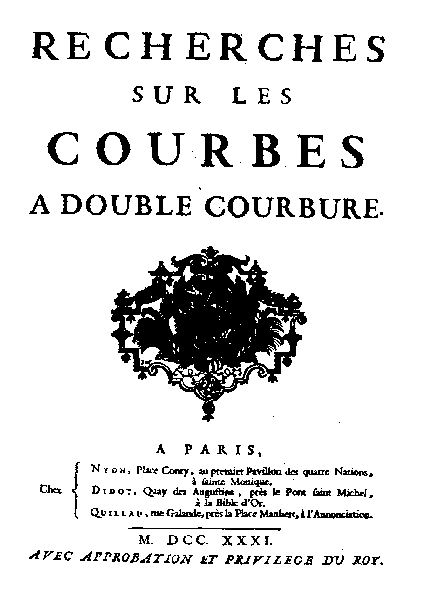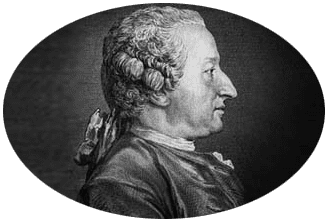Nationality French Name Alexis Clairaut Fields Mathematics | Known for Clairaut's equation Role Mathematician | |
 | ||
Born 13 May 1713 ( 1713-05-13 ) Died May 17, 1765, Paris, France | ||
Alexis Clairaut | Wikipedia audio article
Alexis Claude Clairaut (13 May 1713 – 17 May 1765) was a prominent French mathematician, astronomer, geophysicist, and intellectual.
Contents
- Alexis Clairaut Wikipedia audio article
- Childhood
- The shape of the Earth
- Focus on astronomical motion
- Personal life and death
- References
Childhood

Clairaut was born in Paris, France, where his father taught mathematics. He was a prodigy — at the age of twelve he wrote a memoir on four geometrical curves and under his father's tutelage he made such rapid progress in the subject that in his thirteenth year he read before the Academie francaise an account of the properties of four curves which he had discovered. When only sixteen he finished a treatise on tortuous curves, Recherches sur les courbes a double courbure, which, on its publication in 1731, procured his admission into the French Academy of Sciences, although he was below the legal age as he was only eighteen.
The shape of the Earth

In 1736, together with Pierre Louis Maupertuis, he took part in the expedition to Lapland, which was undertaken for the purpose of estimating a degree of the meridian arc. After his return he published his treatise Theorie de la figure de la terre (1743). In this work he promulgated the theorem, known as Clairaut's theorem, which connects the gravity at points on the surface of a rotating ellipsoid with the compression and the centrifugal force at the equator. This hydrostatic model of the shape of the Earth was founded on a paper by Colin Maclaurin, which had shown that a mass of homogeneous fluid set in rotation about a line through its centre of mass would, under the mutual attraction of its particles, take the form of an ellipsoid. Under the assumption that the Earth was composed of concentric ellipsoidal shells of uniform density, Clairaut's theorem could be applied to it, and allowed the ellipticity of the Earth to be calculated from surface measurements of gravity. In 1849 Stokes showed that Clairaut's result was true whatever the interior constitution or density of the Earth, provided the surface was a spheroid of equilibrium of small ellipticity.
Focus on astronomical motion
He obtained an ingenious approximate solution of the problem of the three bodies; in 1750 he gained the prize of the St Petersburg Academy for his essay Theorie de la lune; the team made up of Clairaut, Jerome Lalande and Nicole Reine Lepaute successfully computed the date of the 1759 return of Halley's comet.
The Theorie de la lune is strictly Newtonian in character. This contains the explanation of the motion of the apsis which had previously puzzled astronomers, and which Clairaut had at first deemed so inexplicable that he was on the point of publishing a new hypothesis as to the law of attraction when it occurred to him to carry the approximation to the third order, and he thereupon found that the result was in accordance with the observations. This was followed in 1754 by some lunar tables, which he computed using a form of the discrete Fourier transform. Clairaut subsequently wrote various papers on the orbit of the Moon, and on the motion of comets as affected by the perturbation of the planets, particularly on the path of Halley's comet.
Personal life and death
His growing popularity in society hindered his scientific work: "He was focused," says Bossut, "with dining and with evenings, coupled with a lively taste for women, and seeking to make his pleasures into his day to day work, he lost rest, health, and finally life at the age of fifty-two."
He was elected a Fellow of the Royal Society of London in November, 1737.
Clairaut died in Paris in 1765.
